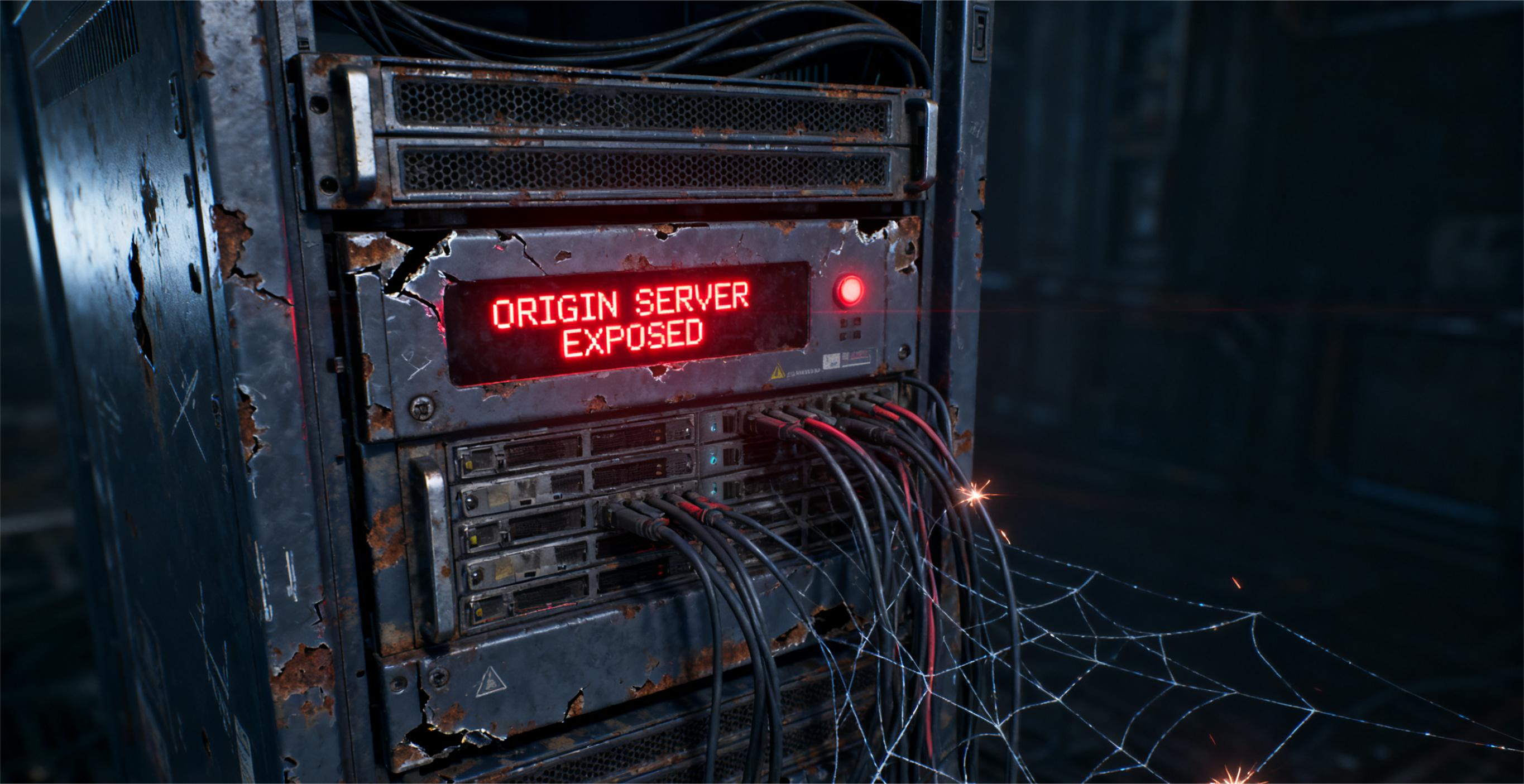High-Protection CDN vs. Regular CDN: What's the Difference? A 5-Aspect Comparison to Choose Right and Avoid Pitfalls
Website knocked out by a DDoS? Bought a CDN but it didn't help? Don't panic! You probably mixed up a "regular acceleration CDN" and a "High-Protection CDN"! This article breaks down the differences between them – explaining clearly from protection capabilities and node structure to caching strategies across 5 key aspects. Also learn how to avoid pitfalls (like sky-high bills during attacks) and ch

Recently, I helped a friend deal with a website takedown by a DDoS attack and noticed an interesting phenomenon: their company actually had a CDN, but it completely failed during the attack.
The tech lead was frustrated – "We paid for it, so why did it still crash?" I took one look at the contract and laughed: "You bought a regular acceleration CDN, not the High-Protection version!"
This issue is actually very common. Many teams only look at price and node count when choosing a CDN, without truly understanding the difference between "acceleration" and "high protection." The result is smooth sailing during normal times, but a complete disaster when attacked.
Today, let's break down the real differences between a High-Protection CDN and a regular CDN–

Let me start with a bold statement: A regular CDN is "icing on the cake," a High-Protection CDN is "fuel in snowy weather" (a lifesaver in need).
You might not notice the difference when your site is healthy, but when a real attack hits, the difference between them is life and death.
Let me use a few real cases I've handled. Last year, an e-commerce company used a well-known regular CDN. During Black Friday, a competitor hit them with a 20G DDoS attack, paralyzing them for six hours and causing millions in lost orders.
Later, they switched to a High-Protection solution I recommended. The same attack traffic came, and they were completely unfazed – because the mitigation capacity is simply on a different scale.
Aspect 1: Protection Capability – The Core Difference
The main goal of a regular CDN is acceleration; protection is at best an add-on. The so-called "basic protection" from many providers is only 5-10Gbps, with loose detection rules that often fail against slow attacks or CC attacks.
High-Protection CDNs are specifically designed to withstand attacks. For example, CDN5's high-protection nodes have a default mitigation capacity of 300G+, with advanced plans even reaching Tb levels.
And it's not just about volumetric attacks; they have refined strategies for layer 7 attacks (like CC attacks, API brute-forcing).
I tested 08Host's High-Protection CDN – their CC protection could actually distinguish between real users and crawler/bot behavior, not just crude IP blocking.
This is crucial – many security solutions either over-block real users when strict or fail to stop attacks when loose.
Aspect 2: Node Structure and Traffic Routing
Regular CDN nodes prioritize wide coverage and low latency, resulting in many nodes but each being relatively small.
During an attack, a single node can be easily overwhelmed, and the traffic routing system might expose your origin server IP to the attackers.
High-Protection CDNs follow a "fewer but superior" node strategy. For instance, CDN07's global high-protection network might only have 30+ nodes, but each is a super data center with redundant bandwidth and built-in scrubbing equipment.
Attack traffic is routed to scrubbing centers at the entry point, and only clean traffic is sent back to your origin.
Watch out for this pitfall: Some vendors boast "thousands of global nodes," but their high-protection plan only covers a few of them.
Always clarify the number and location of high-protection nodes. Otherwise, nodes in the US might mitigate attacks while users in Asia get disconnected ("trip the circuit").

Aspect 3: Caching Strategy and Cache Failure Handling
Regular CDN caching is "obedient" – once the TTL expires, it dutifully goes back to the origin. If attackers discover the origin IP at this point, they can hit the origin server directly and take it down easily.
High-Protection CDNs are much smarter about this. Even if cache expires, they try to serve stale content while using anomaly detection mechanisms to check the origin server's status.
If the origin response is abnormal (e.g., timeout or 5xx errors), they automatically extend the cache TTL and activate a protection mode – I've even seen solutions that can host static pages offline for 72 hours.
This is wisdom from real combat: Attackers often strike the origin when caches expire, so High-Protection CDNs must be deeply optimized for this.
Aspect 4: Reporting and Analysis Features
Reports from regular CDNs are basically the trifecta: traffic, hit rate, status codes. During an attack, you only see bandwidth spikes, with no clue who is attacking, how, or where.
High-Protection CDN reports are "forensic-grade." They break down attack types, source ASN, top attacking IPs, protocol distribution – all listed for you.
CDN07's reports can even reconstruct the attack timeline, showing you when the attack started and when it was mitigated.
Don't underestimate this – being able to quickly analyze attack characteristics lets you adjust defense strategies, gather evidence, or even counterattack.
I once used a vendor's detailed reports to identify a botnet hired by a competitor; presenting the evidence chain made them back down immediately.
Aspect 5: Hidden Costs and Support
Regular CDNs seem cheaper but can generate shocking bills during attacks! Many vendors' "unlimited traffic" plans exclude DDoS traffic. Scrubbing traffic generated by attacks might be billed separately at $XX/GB.
I had a client get a bill for tens of thousands overnight – worse than ransomware.
High-Protection CDNs usually have a fixed price including scrubbing traffic, with overages at a fixed rate. The clear pricing might seem higher upfront, but at least it won't surprise you.
Additionally, High-Protection CDNs typically come with 24/7 security team support. With regular CDNs, you're stuck with support tickets. During a real attack, you'll learn the stark difference between a "5-minute response" and a "5-hour response."

So how should you choose? Here's a simple, blunt rule of thumb:
If your business is purely static brochureware, has low traffic, and hasn't made any enemies, a regular CDN might suffice. But if you have any online transactions, user interactions, or even minor competition, go straight for High-Protection.
Attack costs are too low now. Script kiddies can download tools and launch几十G (tens of Gigabits) attacks easily. Don't wait until you're down to switch – changing CDNs during an attack is like changing a tire after a crash; it's too late.
Finally, a pro tip for configuring High-Protection CDNs: Always hide your origin server IP! Many teams set up the CDN but forget that mail servers, third-party API calls, or even employee VPNs can expose the real origin IP.
Use separate firewall rules to only allow traffic from your CDN provider's IP ranges back to your origin.
Here's an example Nginx snippet to restrict origin access to only your High-Protection CDN: [Note: Specific configuration code would go here, but wasn't provided in the original text]
Of course, you need to get the specific IP ranges from your vendor; they usually provide an API for dynamic updates.
In short, the online environment is complex now; even your CDN needs to "guard against allies" (potential leaks). A regular CDN is like a sedan – fine for city driving.
A High-Protection CDN is an armored truck – more expensive and uses more fuel (higher cost), but it truly saves your life in critical moments.
Choose based on your business risk. Don't flinch at the per-unit price difference – getting knocked out once could cost you enough to buy ten years of High-Protection.
P.S., If your budget is really tight, at least put Cloudflare's free plan in front of your regular CDN – performance is mediocre, but it can handle most common attacks.
But don't expect free solutions to handle commercial-grade attacks; attackers specifically target their weaknesses.
Hope this helps you avoid some pitfalls. The cost of learning lessons (学费) in this industry is too high – save where you can –
Share this post:
Related Posts

Is It Possible to Bypass China Mobile's CDN Blocking? Why Are Some CDNs Blocked Immediately Upon Use?
Is bypassing China Mobile's CDN blocking feasible? This article deeply analyzes the real reasons beh...

Top 5 Recommended CDN Providers for Accelerating Content Delivery in China
How to choose a CDN service for the China region? This article compares 5 top CDN providers based on...

How to Choose Between DDoS-Protected CDN and DDoS-Protected Servers for China? A Practical Guide
What's the real difference between a DDoS-protected CDN and a DDoS-protected server for China? This...
